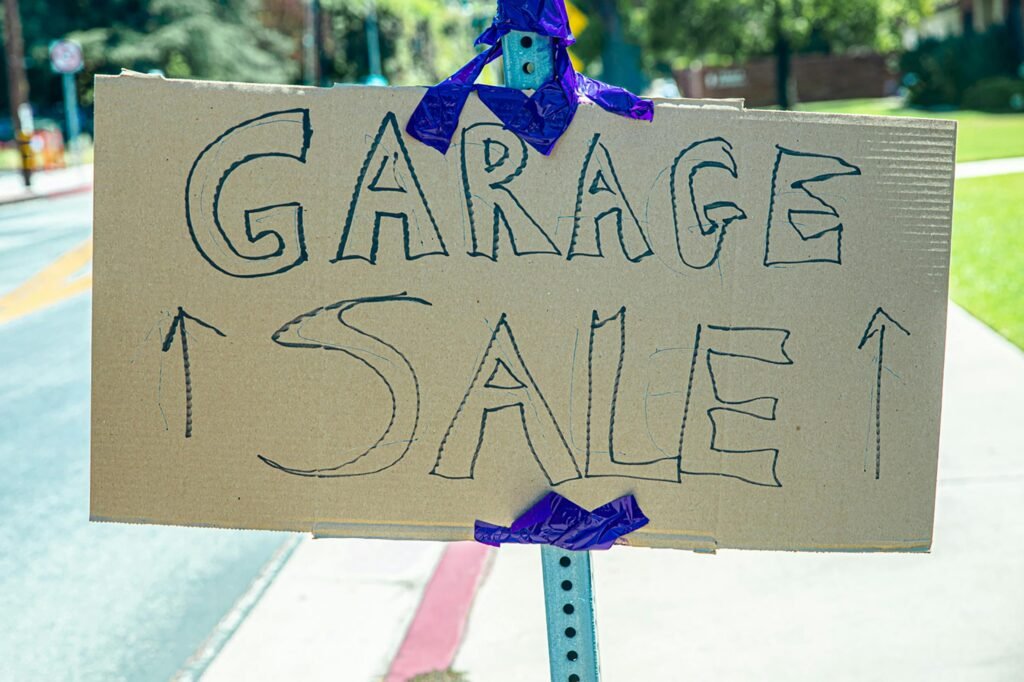After decades of memories, milestones, and meaningful moments, it’s amazing how much stuff we accumulate. Whether you’re moving to a smaller home, simplifying your space, or just tired of boxes you haven’t opened since 1987, a well-planned garage or tag sale is the perfect way to turn clutter into cash—and maybe even enjoy a few friendly chats with neighbors along the way.
But before you drag your old golf clubs and vintage lamps to the driveway, a little strategy can go a long way. Here’s how retirees can plan and execute a profitable, stress-free garage sale that clears out the attic and boosts the piggy bank.
Step 1: Plan Ahead Like a Pro
Pick the Perfect Date:
Weekends are best—Saturday mornings bring the most foot traffic. Avoid holiday weekends when people might be out of town. Check the weather forecast and have a backup plan (like a pop-up tent or a garage with room to move things inside).
Team Up for More Traffic:
Consider joining forces with neighbors or hosting a community-wide tag sale. Multi-home sales attract more visitors—and buyers tend to stay longer when they have more to browse.
Check Local Rules:
Some towns require permits or restrict signage. A quick call to your local city office can save you trouble on sale day.
Step 2: Declutter with a Clear Eye
Start the process by decluttering. Go room by room with a sorting system:
- Keep: Things you use or love.
- Sell: Gently used items with resale value.
- Donate: Items in good shape but unlikely to sell.
- Toss: Broken, stained, or unsafe items.
For 6 top tips for decluttering, read our Declutter the Clutter blog!
Popular items at garage sales include:
- Small furniture
- Tools
- Kitchen gadgets
- Books and puzzles
- Costume jewelry
- Home décor
- Seasonal decorations
- Vintage items
- Gently used clothes and handbags
Tip: Don’t assume something won’t sell. That fondue pot from 1973? Someone might love it.
Step 3: Price It Right (Without Emotion)
Pricing is where many people trip up—especially when items have sentimental value. Keep in mind: garage sale shoppers expect deals. They also like to negotiate so plan on pricing slightly higher than what you’ll accept.
Here’s a general pricing guide:
- Items in used but new like or good condition: 10–30% of original retail price
- Paperbacks: $0.50–$1; Hardcovers: $1–$3
- Clothes: $1–$5.
- Furniture: $10–$100 (depending on size and quality)
- Electronics: Test them first. Price based on age and working condition. But you’d be surprised how people might just need an old style cord or piece of equipment.
Pro Tips:
- Use bright stickers or tags for prices. Consider color-coding by price.
- Group similar items in bins with a “$1 each” sign.
- Bundle small items (e.g., 3 DVDs for $5). Or if you want to get rid of volume, consider offering a bag of books or a bag of clothes for $10-20.
- Be open to haggling, but have a bottom line.
Step 4: Stage Your Sale for Success
Think like a shopkeeper, not a yard cleaner.
- Place “wow” items like furniture or tools near the street to draw people in.
- Organize tables by category: kitchen, décor, books, etc.
- Use tablecloths or clean displays to elevate the look.
- Create walkways and keep things uncluttered.
- Hang clothes on a portable rack or rope line—not in a pile.
Step 5: Advertise Everywhere
To attract the most shoppers, cast a wide net:

- Online: Post on Facebook Marketplace, Craigslist, Nextdoor, and local garage sale groups.
- In Person: Put signs at busy intersections with arrows leading to your sale. Use bold, legible lettering and include the date/time.
- Bonus Tip: List high-interest items in your ads: “Tools, antiques, vintage records, kitchenware.”
Step 6: Be Ready on Sale Day
- Have plenty of small bills and change.
- Wear a fanny pack or apron to keep money close.
- Offer reusable bags or boxes for buyers.
- Have extension cords handy for testing electronics.
- Put out (and advertise) a “free” bin—people love a deal and it clears clutter faster.
Step 7: After the Sale—Wrap Up & Donate
Anything that doesn’t sell? Don’t drag it back inside. Schedule a donation pickup with a local charity, or drop items off yourself. Some organizations even take unsold books, electronics, and clothes. Have a plan for what you will do with the things that don’t sell!!
Count your earnings, treat yourself to something fun, and enjoy your lighter, simpler space.
Final Thoughts: Downsizing Doesn’t Mean Letting Go of Everything
Hosting a garage sale isn’t just about making money—it’s a step toward a more streamlined, peaceful home. For retirees, it’s a way to reflect on the past, share stories with strangers who fall in love with your old treasures, and move forward with purpose. With a little planning, your garage sale can be profitable, joyful, and even a little nostalgic.


